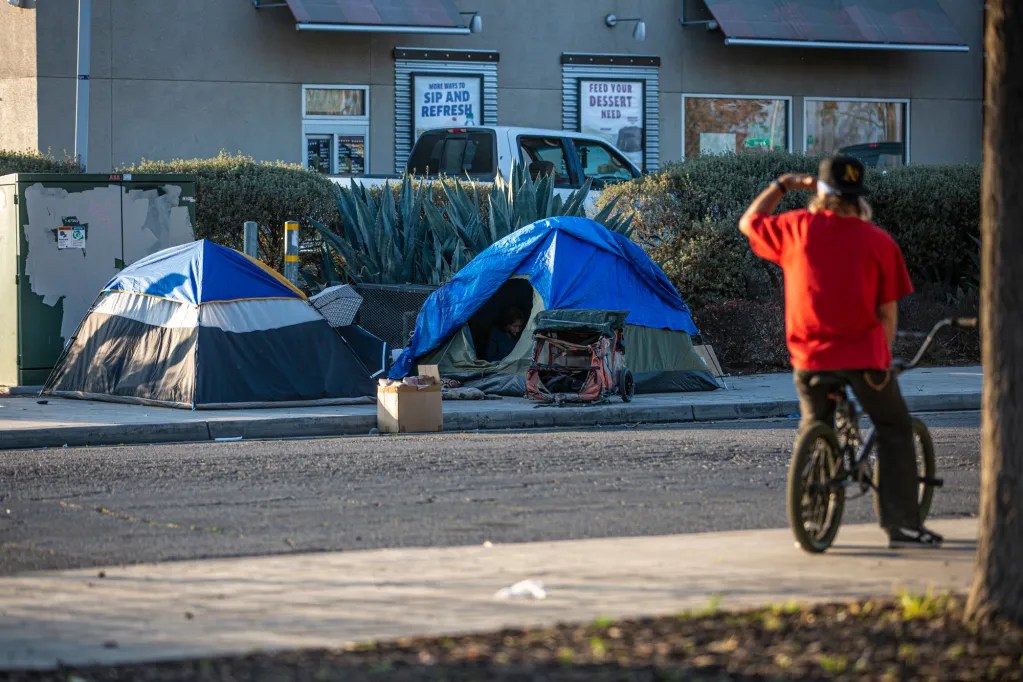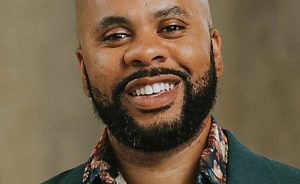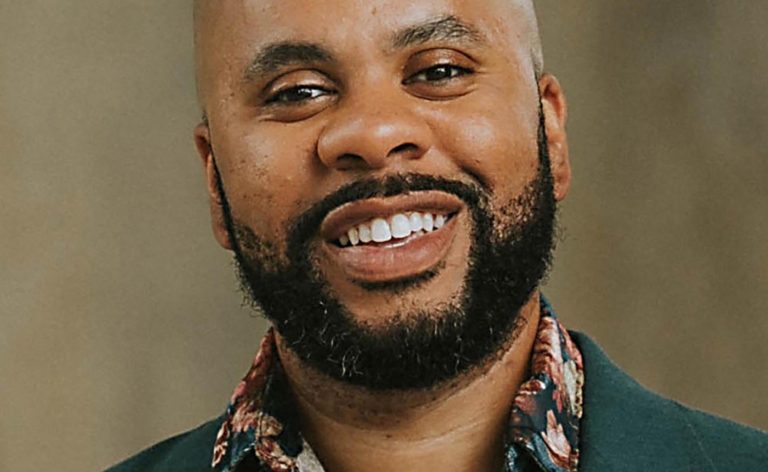BY MARISA KENDALL AND YUE STELLA YU | CalMatters
Backers of a tough-on-crime California ballot measure put homelessness at the forefront of their campaign to roll back Prop. 47. But would the measure actually help get people housed?
Homelessness gets top billing in a measure likely to make it onto your November ballot. Whether the measure has anything to do with homelessness is debatable.
The initiative proponents are calling the “Homelessness, Drug Addiction, and Theft Reduction Act” would increase penalties for some drug and theft crimes, by rolling back Proposition 47 — the criminal justice changes California voters passed a decade ago. It also would force some people arrested three or more times for drug crimes into treatment.
Related Articles
San Mateo County to launch mental health ‘CARE Court’ to bring homeless people off street
Santa Cruz County a case study on pandemic Project Roomkey
Oakland’s homeless population rises 9%, Alameda County population dips 3%
Gov. Newsom announces first $3.3 billion from Prop. 1 mental health bond
New law proposed to remove homeless encampments from creeks across Santa Clara County
But where does homelessness factor into this tough-on-crime measure? The initiative includes no money for housing, shelter or treatment beds — leading some experts to question how it would help get California’s more than 181,000 unhoused residents off the street in a state where recent research shows loss of income is the leading cause of homelessness. Nor does the measure allocate or create new funding sources to pay cities or counties to enforce it.
For Yolo County District Attorney Jeff Reisig, who helped author the proposed ballot measure, the philosophy is simple: The measure would slash the homeless population by pushing those struggling with drug addiction into treatment.
“The big part of this, which is the key to the program, is it’s going to be compelled,” Reisig said. “People are going to have to go through the program or accept the consequences.”
But according to Elliott Currie, a professor of criminology, law and society at the University of California Irvine, the measure is based on a false assumption.
“The theory is that people are homeless because we’ve been too lenient with drug addiction,” Currie said. “I think I can safely say that I don’t see one shred of serious evidence that that’s what’s going on.”
Did Prop. 47 increase homelessness in California?
The proposed ballot measure targets Prop. 47, which, when passed by voters in 2014, reduced certain theft and drug crimes from felonies to misdemeanors. In some circles, Prop. 47 now is being blamed for a perceived increase in crime – and a fierce debate is raging over whether, and how, to change it.
Backers of the measure, which is likely to qualify for the ballot after it recently submitted more than 900,000 signatures (about 547,000 valid ones are required), also blame Prop. 47 for California’s dire homelessness crisis.
In the decade that Prop. 47 has been in effect, homelessness in California has grown by more than half — and backers of the proposed ballot measure say the two are “directly connected.” They argue by watering down the legal consequences for drug use, Prop. 47 removed the incentives for homeless Californians to participate in mental health and drug treatment, and as a result, fewer are. Because of that, they argue, more people are living on the streets.
“One of the primary root causes of homelessness is serious addiction, which is debilitating and results in people not being able to function or even hold a job,” Reisig said in an interview with CalMatters.
It’s true that participation in drug courts dropped throughout the state in the wake of Prop. 47. In San Diego County, for example, more than 650 people went through drug court in the year before Prop. 47 passed. By 2021, it was down to just 255.
As evidence Prop. 47 is tied to homelessness, backers of the measure point to states with stronger drug laws and smaller homeless populations. Illinois, for example, has a homeless rate about five times less than California’s.
But there are a lot of other factors — especially housing costs — contributing to the state’s homelessness crisis. Fair market rent for a two-bedroom in Chicago is just $1,714 – nearly half the going rate in San Francisco. The San Francisco area rate increased 72% since Prop. 47 passed, hitting $3,359 this year, according to the U.S. Department of Housing and Urban Development.
The number one reason Californians end up homeless is a loss of income — not drug use, according to a UC San Francisco study
For some experts who study crime and homelessness, the ballot measure is baffling.
“I’m not aware of any data that shows a connection between Prop. 47 and homelessness,” said Charis Kubrin, a professor of criminology at UC Irvine. “So it’s a bit of a puzzle to me why they’re together like that.”
Blaming the state’s spike in homelessness on Prop. 47 is “preposterous,” said Sharon Rapport, director of California state policy for the Corporation for Supportive Housing. “All of the changes that the (ballot measure) is proposing have nothing, nothing whatsoever, to do with homelessness.”
The organization hasn’t even taken an official position on the measure, because, Rapport said, it’s not related to homelessness.
The number one reason Californians end up homeless is a loss of income — not drug use, according to a UC San Francisco study that provides the most comprehensive look yet at the state’s homelessness crisis. And in the six months before becoming homeless, the people surveyed were making a median income of just $960 a month.
That doesn’t mean drug use has nothing to do with homelessness. Nearly a third of people surveyed reported using methamphetamines three times a week, while 11% used non-prescribed opioids. Other studies have had varying results: a 2022 Stanford Institute for Economic Policy Research study, which cited research from multiple surveys across several states, showed 43% to 88% of the homeless population struggled with drug abuse.
Drug and alcohol overdoses are also the leading cause of death for homeless people nationwide, according to a February study examining mortality rates among unhoused people between 2011 and 2020.
But it’s clear not everyone on the streets has an addiction. Therefore, the proposed ballot measure would leave out a large chunk of the state’s homeless population.
If the measure helps even a third of California’s 181,000 unhoused residents — that’s a huge number, Reisig said.
“I’ll take that,” he said. “I’ll take that number to try and get those people well, and to get them reintegrated, and to keep them out of jail and prison, and keep them from dying on the street of overdose or murder.”
This measure might help some people get sober, said Benjamin Henwood, director of the USC Center for Homelessness, Housing and Health Equity Research. But for many people, that won’t be enough to end their homelessness, he said. While being sober might make someone more likely to get a job, it won’t make housing any less expensive.
“The question is: Once treatment is up, where do they go?” he said.
Under this measure, the answer to that question will depend on each individual county and how much, if any, housing they make available for people coming out of treatment.
How would the Homelessness, Drug Addiction, and Theft Reduction Act work?
If the proposed ballot measure is approved by voters, certain repeat drug offenses could be prosecuted as a “treatment-mandated felony.” That means the third time someone is arrested for a drug offense, they could be given a choice between jail or mandatory addiction and mental health treatment.
The measure says people participating in mandatory treatment also would be offered “shelter, job training, and other services designed to break the cycle of addiction and homelessness.” But it doesn’t say how any of that would be paid for. It would be up to counties to decide whether to offer shelter and other services, and how to fund them, Reisig said.
“That will have to be deployed in each county to the extent they can do it,” he said.
The measure also doesn’t specify how the mandatory drug and mental health treatment would be funded.
But without guaranteeing those housing services, the measure could actually worsen homelessness, Currie said. There’s already a robust jail-to-homelessness pipeline in California: 43% of those surveyed in the UCSF study were in jail or prison, or on probation or parole, in the six months before they became homeless.
“Anybody who says you’ve got to solve the problem by putting more people behind bars, but you then don’t say anything about how you’re going to help them re-enter when they come out — I think that’s pretty bogus,” Currie said.
The measure also doesn’t specify how the mandatory drug and mental health treatment would be funded.
Resources for treatment already are stretched thin in California. In a 2022 survey by the state’s Department of Health Care Services, 70% of California counties reported “urgently” needing more residential addiction treatment, while nearly 40% didn’t have any residential facilities at all.
In addition to providing no new funding, the proposed ballot measure could actually end up reducing funds for the very programs it’s trying to bolster, according to a report from the independent Legislative Analyst’s Office. That’s because Prop. 47 saved the state money in criminal justice costs by diverting people away from prison and jail. Those savings are earmarked for projects that provide mental health and substance use treatment (nearly $104 million was awarded between 2017 and 2020, and another $96 million between 2019 and 2023).
By gutting Prop. 47 and funneling more people into the state’s jails and prisons, the Legislative Analyst estimates the proposed ballot measure would eat away at those savings and increase criminal justice costs by as much as tens of millions of dollars per year. That could mean less money for mental health services and addiction treatment.
Reisig dismissed that worry, saying, at least in Yolo County, where he is district attorney, Prop. 47 savings haven’t made much difference. “There’s literally nothing that I fear losing through this program,” he said.
There is some new money available from other pots. In March, California voters approved a $6.4 billion bond to pay for 6,800 beds in facilities treating mental illness and addiction, and as many as 4,350 housing units for people who need those services. The state is set to start awarding that money in the spring and summer of 2025, Newsom said this month.
But at the same time, to plug a yawning budget deficit, Newsom has proposed cutting funds from the Behavioral Health Bridge Housing Program, which provides beds for people who need mental health and addiction services.
Currie said he is “skeptical” of the lack of funding mechanisms for treatment programs and other services to ensure homeless people stay off the streets post-treatment. That, he said, could burden counties that already struggle with insufficient funding for such services — one in five homeless people surveyed by UCSF researchers said they sought substance abuse treatment but failed to get it.
“You can’t just say, ‘Ok, you counties. Since you are swimming in so much money after all … we are going to mandate drug treatment for some people on top of the existing number of clients,’” Currie said.
The politics of homelessness
Some political strategists say the measure’s tie to homelessness represents the campaign’s attempt to capitalize on public concern about the problem. Homelessness is a top issue on California voters’ minds, according to a February 2024 statewide survey by the Public Policy Institute of California.
“This notion somehow that it addresses homelessness is deceptive and downright farcical,” said Garry South, a longtime Democratic consultant who has worked on ballot measures for more than 20 years.
Homelessness is ultimately due to a lack of housing, he argued, and measures aiming to address the problem without providing housing are “disingenuous.”
“You’ve heard the old saying ‘Putting lipstick on a pig,’” South said. “I’m not saying that this measure is a pig, but what I’m saying is it’s a standard procedure … to try to gussy it up with some reference or some provision that really strikes a responsive chord with voters when that’s not really what the initiative is about.”
If the measure appears before voters in November, “homelessness” won’t be in the title they see on their ballots. The official title of the measure, chosen by the state attorney general, is: “Allows felony charges and increases sentences for certain drug and theft crimes.”
A lot of thought, politics, and sometimes even litigation goes into drafting the title and summary of a ballot measure. While proponents of a proposition want to entice voters with their description, it’s ultimately the state attorney general’s job to make sure the language is fair.
Even without mentioning homelessness, South said the ballot measure could still “pass on its own merits.” He, for one, would likely vote for it as a way to decrease crime.
Drugs and homelessness
Tom Wolf, who has experienced both homelessness and addiction first hand in San Francisco, said the proposed ballot measure has great potential to help people who were like him.
An opioid addiction cost Wolf his job and his home, and landed him on the streets of San Francisco’s Tenderloin neighborhood in 2018. He said he worked as a “holder” for nearby drug dealers, safeguarding their stash of narcotics in case they were busted by the police. Sometimes he stole razor blades from a nearby Target and sold them for money to buy heroin.
Wolf says he was arrested on drug charges five times within three months, and was released back to the street each time. The sixth time he was arrested, the judge let him sit in jail for three months, where he got sober. Wolf finally called his brother, who said he would bail him out if Wolf went to drug treatment. Wolf agreed. He says that if he had been given the choice between jail and treatment the last time he was picked up, he would have chosen treatment.
In June, Wolf will have six years sober. He’s now an advocate for drug policy reform, and works as director of West Coast initiatives for the Foundation for Drug Policy Solutions.
“That accountability piece was the key to me getting off the street,” he said, “getting sober, becoming willing to accept an opportunity to go to treatment and give recovery an honest try.”












